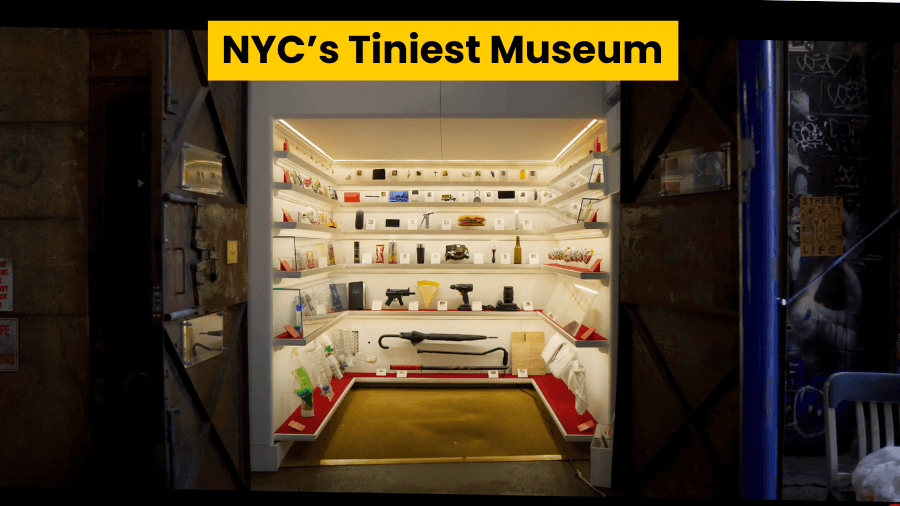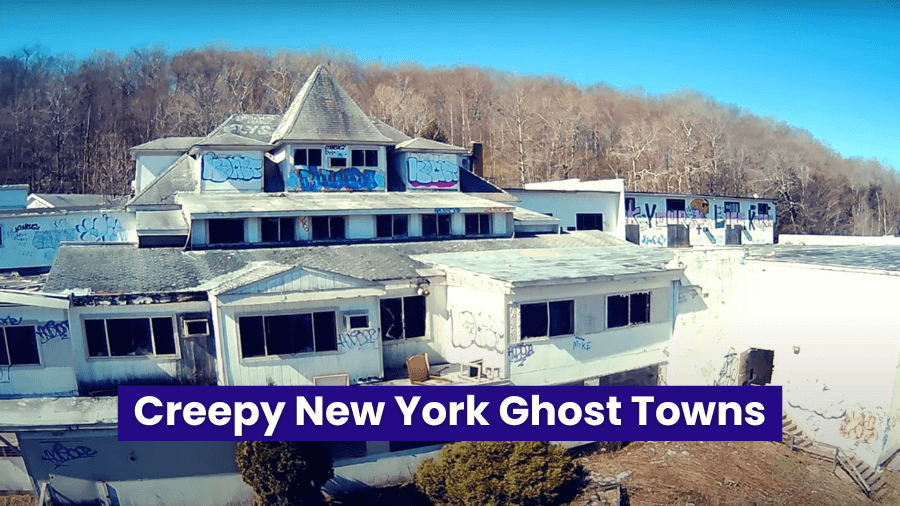Deep in the woods, hidden along an old crumbling path, lies the remains of a once-grand estate.
Stone walls now stand abandoned, their windows empty and dark.
A forgotten swimming pool sits in ruins, slowly being swallowed up by nature.
The place feels frozen in time, as if the people who once lived here simply vanished.

What happened here?
Who lived in this forgotten place?
And why did it all fall apart?
Keep reading to find out.
Where Is It?
The ruins of the Cornish Estate are located in Hudson Highlands State Park, just outside the town of Cold Spring in New York’s Hudson Valley.

You can reach it easily from New York City by taking the Metro-North Hudson Line to Cold Spring.
From there, it’s a short drive or a scenic 20-minute hike to the trailhead.
The Story Behind It
Back in the early 1900s, the Cornish Estate wasn’t just a home—it was a statement of wealth.
Edward Joel Cornish, a powerful businessman and president of the National Lead Company, bought the property with his wife, Selina, in 1917.

They named it Northgate, and it was everything you’d expect from the estate of a wealthy New York power couple.
A grand mansion stood at the heart of it, surrounded by a greenhouse, a swimming pool, and even a working dairy farm.
Tucked away in the Hudson Highlands, it was their escape from city life and they lived there happily for decades.

But then, in 1938, everything changed.
Edward died suddenly, and then just a few weeks later, Selina followed.
With no one left to care for it, the estate was left abandoned.
By the 1950s, Northgate was nothing more than a decaying relic of the past.
Then came the fire.
In 1958, flames tore through the mansion, destroying much of the structure and leaving behind the ruins that still stand today.

No one knows exactly how it started, but by the time it was over, much of the estate was lost.
Just ruins, left behind as a ghostly reminder of what once stood there.

Eventually, the land became part of Hudson Highlands State Park, and nature crept in, claiming whatever was left.
What Remains Today
If you hike out to the ruins today, you’ll find the eerie remnants of what was once a grand estate, now slowly being swallowed by the forest.

The most striking part is the mansion’s stone walls, which are still standing despite decades of decay.
Windows and doorways gape open, and vines creep up the sides, as if nature is trying to pull the place back into the earth.
The inside is nothing but rubble and empty space, but you can still make out the layout of rooms and imagine how extravagant it must have been.

Scattered around the site are other remnants of the estate’s past.
The old greenhouse is little more than a skeletal frame, rusted and overgrown.

A crumbling swimming pool sits nearby, now filled with leaves and debris.
You’ll also find the remains of outbuildings, including the dairy barn, with stone walls that are surprisingly intact.

Paths that once led through manicured gardens are now just overgrown trails, blending into the surrounding woods.
Graffiti covers some of the walls.
Despite the decay, there’s something hauntingly beautiful about the site.
It’s quiet, except for the rustling of trees and the occasional hiker passing through.

Know Before You Go
The Cornish Estate ruins are now part of Hudson Highlands State Park, which means they’re open year-round from sunrise to sunset.
There’s no entrance fee, and you don’t need a permit to visit—just show up and start exploring.
To reach the ruins, you’ll need to hike about a mile from the trailhead at Little Stony Point, just north of Cold Spring.
It’s an easy, mostly flat walk along an old paved road, making it one of the more accessible hikes in the area.
Be careful when exploring—this place has been abandoned for decades, and the walls aren’t exactly stable.
Climbing on them isn’t just dangerous, it’s also not allowed.

There are no restrooms or facilities along the trail, so plan accordingly.
If you’re coming from New York City, the Metro-North Hudson Line will get you to Cold Spring in about an hour and 20 minutes.
From there, it’s a short drive or a 20-minute walk to the trailhead.
The ruins are a great spot to visit year-round, but if you want the best experience, aim for fall when the leaves are changing or early spring before the trees fully leaf out.
In summer, the area can get buggy, and in winter, the trail can be icy, so plan accordingly.
Related Posts



